Don’t miss the companion article, Kid-friendly garden railroading.
How have you made a difference for kids in railways?
Zones are USDA Hardiness Zones
This longer version of Regional gardening reports from “Greening your railway” (Summer 2019 issue) includes nine reports, many photos and a variety of themes. Some of the topics include:
Curiosity in kids
Ride-on railroad
Hobo sign game
Scouting merit badge
Engineering
Powered screwdriver
Brain Gym
Propagation
Aromatherapy
Control to learn
Project Locomotive plans
Live-steam locomotive kits
College kid’s volunteerism
Working kid’s experience
Math teacher’s model
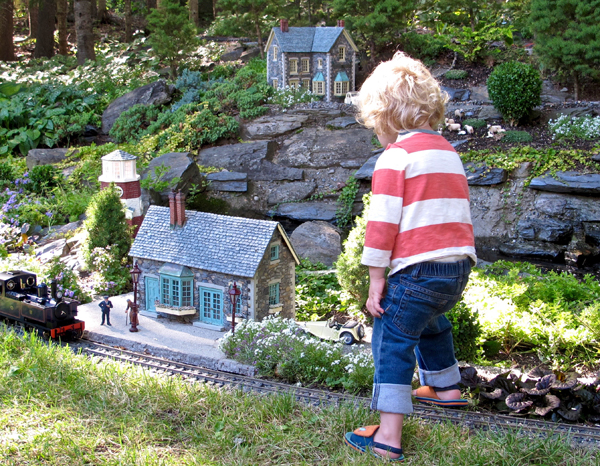
Cape Elizabeth, Maine, Zone 5-6
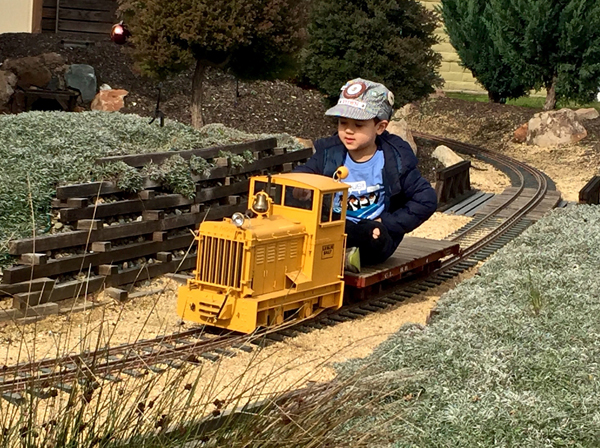
Before beginning construction on the Squirrel Mountain Railroad I envisioned bringing the culture, creativity and spirit of the garden railroading community to the larger ride-on scales. Building a line that was integrated with the landscape was important to me. I put consideration into all my aesthetic choices. On the trackwork, I considered every detail from the color of the ties to the color of the rails. I painted the rails a rusty brown color for realism, and I chemically blacken all the track hardware. Because the railroad is prominently visible in the front yard, I decided it would serve me well to create an elegant and thoughtfully designed miniature landscape so the neighborhood community would find it to be an asset instead of a nuisance. Our railroad has been an incredibly rewarding endeavor for our family and friends and an enjoyable way of connecting with curious neighbors. [Eric also fosters curious families and groups of students at his science museum CuriOdyssey. Visit curiodyssey.org for science projects you can do at home.]
In this scale, a simple roster of equipment is all that is necessary. The first engine on our line was a live steam 0-4-0. Later I added a small Plymouth, which is a super-detailed kitbash of an affordable Maxitrak “Planet” locomotive from the U.K. In the near future a small Shay will be coming to our railroad. We also have a handful of flat cars, a small caboose, and some two-axle industrial cars for track work and maintenance. My four-year-old son Ryden absolutely adores trains and he is ready to start learning the operation of the Plymouth. I truly value the time I have sharing the railroad with my family. It transcends a simple hobby. It is now a legacy of experiences that my son can reflect upon forever.
You can find more photos and information about our Plymouth Locomotive on the “readers photos” page in the Jan/Feb issue of Live Steam & Outdoor Railroading magazine
Ardenwood, Fremont, California, Zone 9
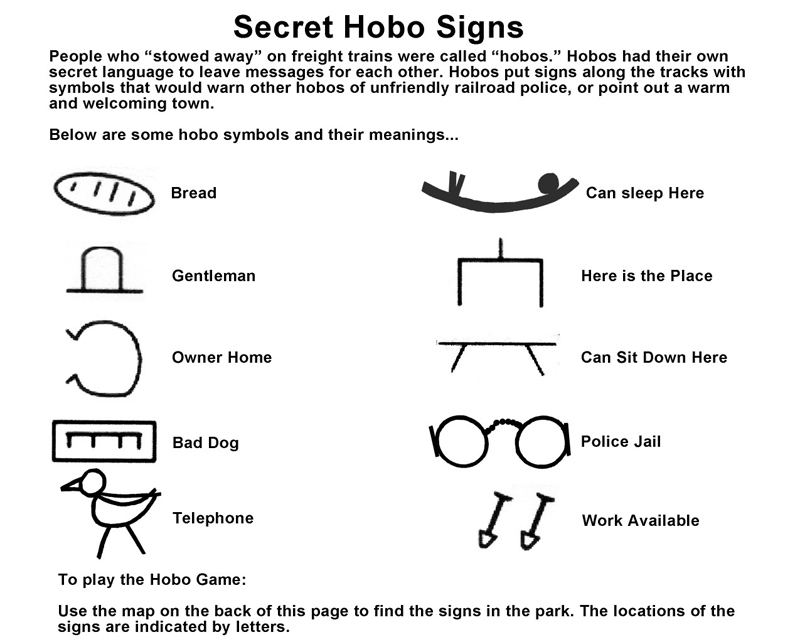
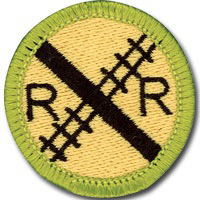
Nancy Norris landscaping grandmother
Pleasant Hill, California, Zone 9
Engineering. Our entire backyard was dug up first by a backhoe to create a large drywell hole, then by my 11-year-old brother who dug a trench to the house where the washing-machine gray water would be piped to the drywell. For weeks he dug, while I created my version of “The World as I Knew it” with roads, parks, bridges, and towns in whatever scale I happened to find in the toy box. Trees were maple branches. My amused engineer father invited neighbors over to tour my somewhat-organized dirt village, possibly proud that I was following in his footsteps. My brother got 50 cents an hour, but I got the praise.
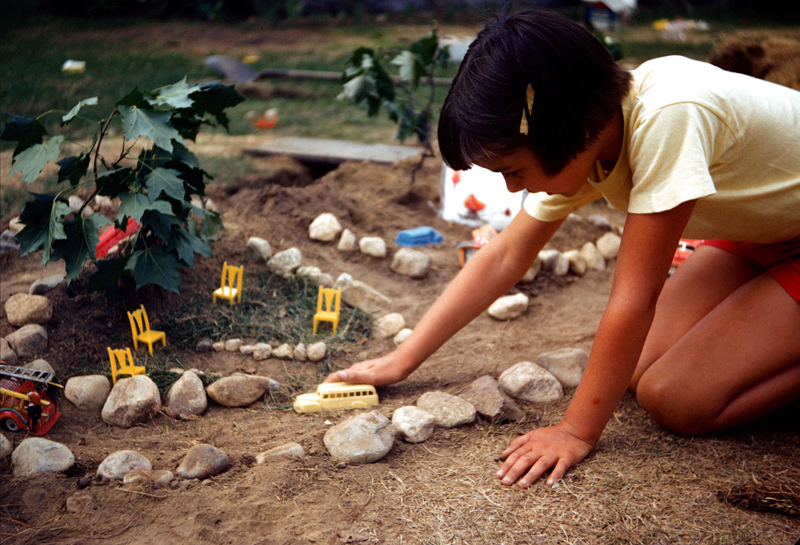
About a decade later while our family lunched at a second story restaurant, I looked down at the courtyard where a worker was carrying something heavy and I mused aloud, “Even though that path is wavy in the garden, anyone could walk it in a straight line, if they want.” My dad, who was only half listening until then, brightened and turned to inform me, “That’s engineering!” He wanted me to know that I had a talent, a natural ability to design. Engineering is about designing things that work, like railroads around the garden or satellites orbiting Earth (his job). He also did his job as a parent by recognizing that talent in me – at least twice!
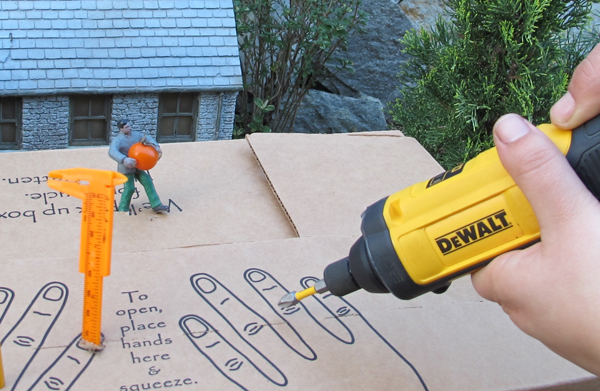
A figure-8 layout is especially good for showing the forebrain how to cross over from the left linear side to the right artistic side. Following instructions, a precursor to most learning, requires crossing the middle of the brain. Note that a figure 8 is the precursor to writing the alphabet – always run your train starting up and left to make the most of this brain gym.
Brain Gym is movement-based learning. When we move our hands, left and right or move our body up and down, crawl on the ground, etc., that movement teaches our brains how to access data. For toddlers, children on the autism spectrum or with cerebral palsy, and stroke patients, activity is a necessary therapy to develop the brain. Differently-abled people need to learn how to learn. https://movementbasedlearning.com.
Propagation. In the railway garden, little Lake noticed lying on the ground several succulent leaves with tiny ¼” long roots sticking out of each jelly-bean leaf. We monitored those leaves until the roots had found the soil and started to grow into new plants. No, he didn’t learn the word, “propagation” – unnecessary – he knew what it was in his own vocabulary. He had a photographic image in his mind. We reinforced this concept by making new plants from stem cuttings in water, where roots could be seen first emerging from stems.
Control. I made a big mistake with Lake when I lied to him for my own benefit. While I was flying my radio-controlled (RC) model airplanes, I gave him a dud transmitter and told him to fly the plane from the safety of the station wagon with the hatch open. After I flew it into the sky I turned around and nodded for him to take over, but of course, I selfishly never gave him the power. By the time he was 3 he was sure he could fly, but all he did was wiggle the transmitter’s sticks. To correct my mistake I got him an RC car, which he bumped from curb to curb on the street. Where’s the control part of RC? So I let him steer my RC boat, but he wiggled it around the lake without making it go anywhere. Obviously, I am the one with control issues, but I did have my day in the sun by getting him a model train. Because of the rails, trains must be controlled in order to go. The beauty of having limiting factors (rails and transmitters) means fewer dimensions to travel and if it goes too fast, it will derail. At last, control! I wish you could have been a fly on the wall to watch him explain to visiting kids (twice his height) how to turn the transmitter knob only to 3 because the train would crash on 4.
Aromatherapy. My mom did us a favor when she kicked us out of the house every day. I credit her with my love of the outdoors. I now grow an assortment of intriguing smells in my railway garden. Sweet marjoram creeps onto walkways. Thymes and flat oreganos get walked on. Fluffy, fine chamomile lines pathways to soothe my nerves. Pungent or sweet, spruce to lavender, it’s aromatherapy, and kids get it in the garden. https://www.medicalnewstoday.com/articles/10884.php
Sniff in the oils… the central limbic region of the brain registers scents by their measurable frequencies as we inhale them. Those vibrations go and heal corresponding body tissue that resonates at those frequencies. Stimulating!
A Japanese national program, ‘Shinrin-yoku’ or ‘forest bathing’, started in 1982. They studied the physical and psychological effects of hanging out under trees. Leaves emit oils, ‘phytoncides,’ which protect plants from insects and other predators. We also absorb those protectants to help our immune systems, lower blood pressure and reduce depression-causing anxiety hormones.
Southern California, Zone 10
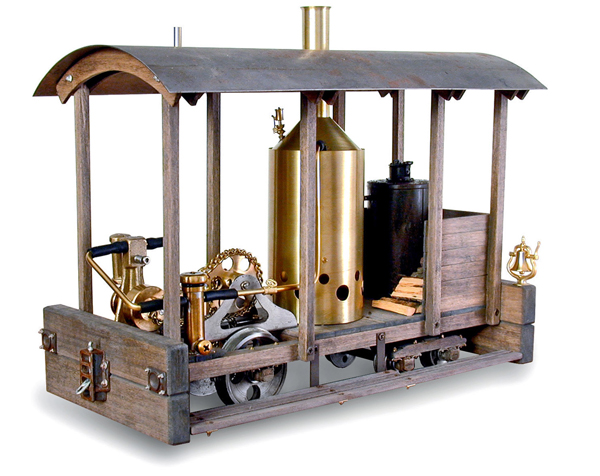
Michael Martin photo
Jeff Young, railroading author
Ontario Canada, Zone 5
Kits for live-steam locomotives these days are very few. The best bet in terms of simplicity and cost is the Accucraft Ruby. Also, the Regner Henry and Betsy locomotives are available in kit form, albeit supply can be spotty at times. Roundhouse Engineering offers a number of their locomotives in kit form (Katie 0-4-0, Lady 0-6-0 and others). Unlike the Accucraft Ruby and Regner locomotives, which are screwdriver assembly kits, Roundhouse requires a degree of metalworking, soldering and painting to complete the bodywork. These locomotives are priced much higher as well and reflect the complexity of the model.
Watch Jeff explain Scratchbuilding with styrene: Everything you need to know to get started, in The Backshop Clinic. https://trainmasters.tv/videos/2018-12-4
Trevor Park
Santa Cruz, California, Zone 10
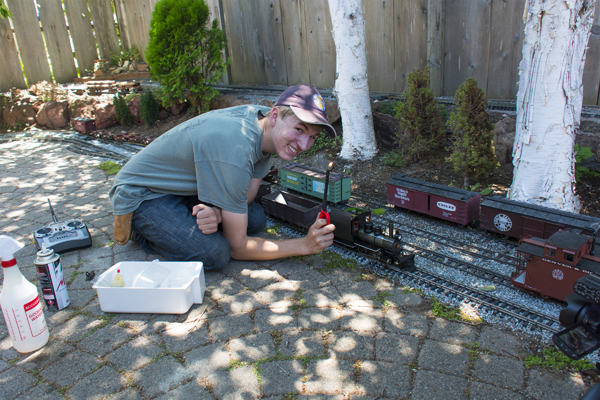
I have been into railroads for my entire life – model and prototype. I had my first birthday at my local tourist railroad, I played with my father’s childhood Märklin train set as a toddler and started making train videos by the time I was 7. My first exposure to garden railroads came about that same time, when I found out a neighbor of mine had a G scale model train in his back yard. I had never heard of the concept of putting a model train outside, but as a 7-year-old kid, I thought that was about the coolest thing in the world. My neighbor graciously allowed me to come over and after my first visit, he had me working on the railroad performing maintenance and running trains. I was hooked!
Life goes on and eventually my neighbor with the railroad moved away. I was still adamantly passionate about trains; I built an HO scale model railroad and was getting into prototype railroading. At that point I worked for the Niles Canyon Railway and the Golden Gate Railroad Museum restoring passenger cars and doing electrical work. But that was what actually sent me full speed into garden railroading. Niles Canyon is located an hour from where I live. My friend Eric, with whom I carpooled to the canyon, once had a garden railroad at his house but tore it out due to the immense amount of maintenance it required. I had always wanted a garden railroad since first seeing one and after using my persuasive begging and quick talking, Eric conceded to reinstalling the garden railroad and we began construction on the Fern Creek and Western Garden Railroad in 2014 (See it on Facebook).
I was 14 when we started construction on the FC&W. I am now 19 and in the nearly five years since the railroad was started, we have grown the railroad into a small empire, spanning the front yard, back yard and both side yards of Eric’s home, not to mention an indoor staging yard. The railroad is modeled in 1:20.3 scale, which displays my interest in narrow gauge and logging railroads. I love this form of railroading so much because of that local tourist railroad (my first birthday party) called Roaring Camp Railroads, where I now work on the train crew when I am at home.
I started college this year in Oregon, far north of where I live. I work on the FC&W every chance I get when I am back home, but Eric works on the railroad year round, even while I am away. College has not gotten in the way of my railroading passion in any way however. As I write this article sitting at my dorm room desk, I am looking at a caboose kitbash I’ve been working on, upscaling a Bachmann Big Haulers caboose to 1:20.3 scale.
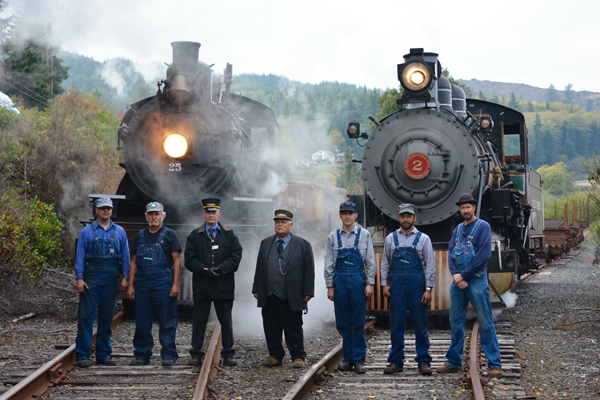 If you’d like to hear a bit more about the FC&W and my involvement in the world of railroading, join the Fern Creek and Western Facebook group and take a look at TSG Multimedia’s Importance of Young People in the Hobby Live Webcast. https://www.youtube.com/watch?v=CVuzsUgmW_M
If you’d like to hear a bit more about the FC&W and my involvement in the world of railroading, join the Fern Creek and Western Facebook group and take a look at TSG Multimedia’s Importance of Young People in the Hobby Live Webcast. https://www.youtube.com/watch?v=CVuzsUgmW_M
Berkeley, California, Zone 9-10
Scott was 5 years old in Fall 2002, when my now 21-year-old son entered kindergarten; we spent a wonderful day visiting one of our favorite public parks – a historic working farm, Ardenwood, in Fremont, California. That day, unbeknownst to us, a big Rail Fair was happening, complete with a horse-drawn train, huge steam tractor, and several model train clubs with traveling layouts. Once Scott saw the G-scale shortline layout, then affiliated with the Bay Area Garden Railway Society (BAGRS), he was hooked. Built only 3 feet from the ground, Scott spent hours and hours following the trains around the track, leaving tracks in the grass. Trains were already Scott’s favorite toys by then, but that day was Scott’s train awakening, and I promptly signed him up as a BAGRS member.
Branch lines. We spent the next year visiting many garden railroad layouts in the San Francisco Bay Area during the monthly open houses sponsored by BAGRS for club members. When the next year rolled around, and Scott was 6, we again visited the Shortline during the annual Rail Fair. This time, emboldened by a year of visiting club member railroads where he was often allowed to help operate the trains, Scott asked if he could help the Shortline. He was welcomed as the youngest member ever, and promised that he would be taught something new each time he came when the Shortline exhibited throughout the Bay Area.
For years after, Scott attended every single Shortline event, becoming a master at manually operating the main train console with two tracks and several sidings and developing his spatial awareness skills. In 2005, we took the plunge and started a small garden railroad in our backyard, inspired by Scott’s design. In Scott’s words, “with G-scale railroading you can use your imagination and build the railroad you want.” The next year, the railroad was expanded to include 350 feet of track, bridges, and trestles as well as our own farm and a desert area. Some of Scott’s proudest and happiest moments at home were hosting his own BAGRS open houses and other meets. These events were catalysts for building his organizational and leadership skills, by planning the day’s activities and recruiting friends to help him operate his consists.
On the payroll. We are fortunate to have raised Scott in the San Francisco Bay Area, where train outfits and organizations abound. Scott became a member of as many as he possibly could, which happily included other electric and steam model train clubs as well as recreational 15,” 19,” and full-size steam railroads. Scott never had idle time, and his repertoire of skills grew, including welding, steam locomotive operation, track management, and machining. For his high school senior year project he even designed and built a railroad crossing at the 15” scale railroad where he volunteered since he was 10 years old, got on the payroll the day he turned 16, and became a certified engineer the day he turned 18.
After starting college studying theater sound and lighting, another passion of his, Scott couldn’t deny his love for trains, so his first full time job was with a shortline freight railroad in San Francisco, starting as brakeman and conductor, followed shortly thereafter by becoming their youngest ever qualified engineer. But still, the lure of steam trains beckoned. So when offered a job with the Cumbres & Toltec Scenic Railway in Colorado and New Mexico at the age of 20, Scott beat feet out to Colorado, where using all the skills he developed starting from the age of 6, he is helping to restore the historic Denver & Rio Grande 168 Locomotive and additionally working as train crew during the operating season.
We have been immensely grateful for Scott’s determined interest and focus on trains, which was ignited when he first laid eyes on a G-scale electric train, and ultimately led to his current job. He has never been one for twiddling his thumbs or going down the rabbit hole of video games. He has been mentored by many along the way and built an incredible network in the steam railroad industry locally and beyond. Scott credits his start in G-scale railroading with introducing him to people of all ages who have become his friends, some certainly for life, and led him down the road to developing skills and creating career opportunities. All this came from just one hobby that we supported and fostered following Scott’s lead as a very young boy.
Jeff Allen, math teacher
Oakland, California, Zone 9-10
Math practice.
Whenever we use math to fix a problem or accomplish something, like counting how many plates to put out when guests are coming over for dinner, we create a representation of the situation in our minds and perform mathematical operations on the idea, not necessarily on the physical objects. We don’t need to wait until people actually show up in order to count them. Humans are quite good at modeling, and have developed such a strong understanding of the process that we can now teach machines to do many of the most tedious calculations for us. When we enter a formula into a spreadsheet cell, we’re modeling some sort of relationship.
Jeff has generously provided us with information on how his students use model railroading and math in the classroom. Download a free PDF with photos, drawings, and his story!
Bay Area Garden Railway Society
California
Every year at Maker Faire, makerfaire.com, Bay Area Garden Railway Society members amaze thousands of folks by running live steam trains all weekend. Young Jack Slovacek travels hours to take his turn, answer questions, and blow some steam.





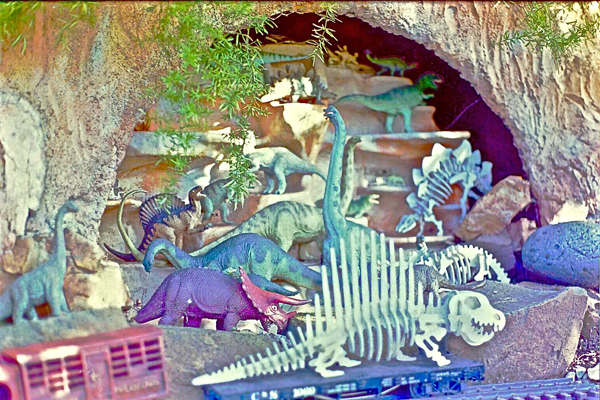
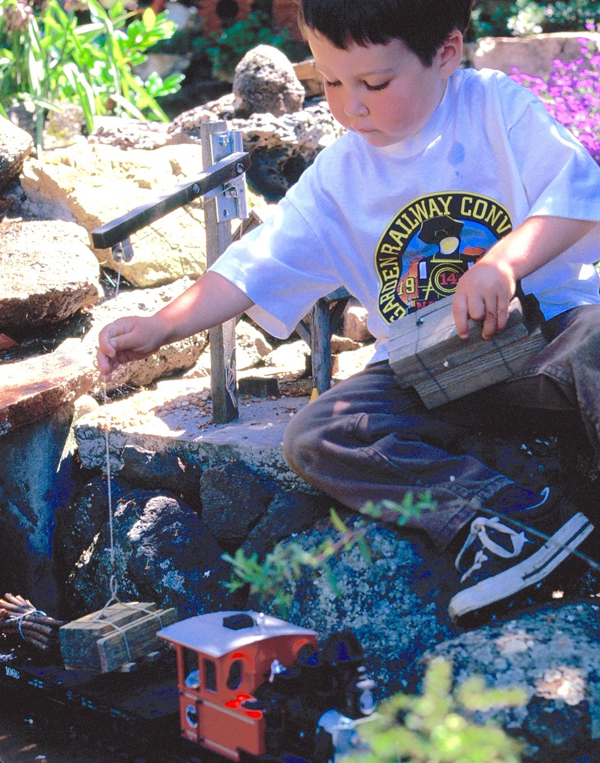
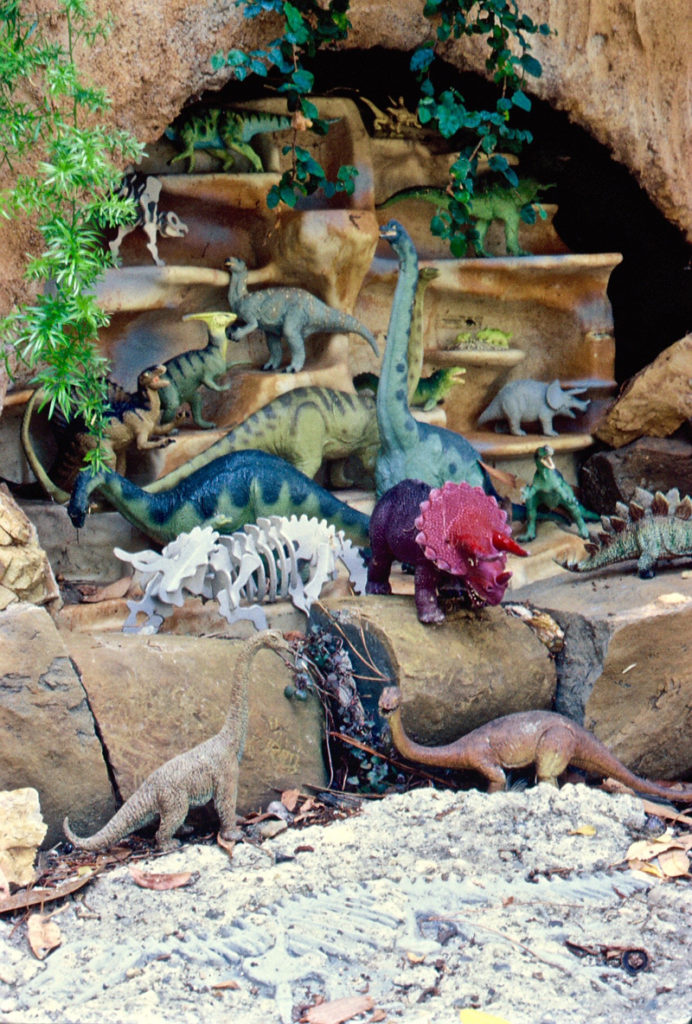
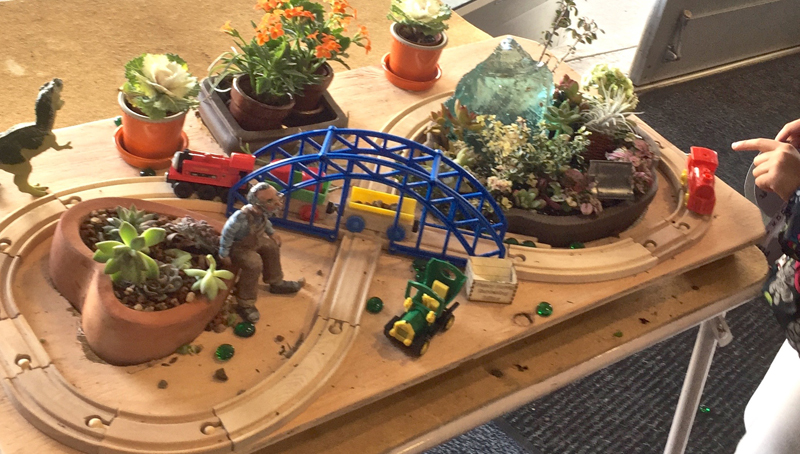
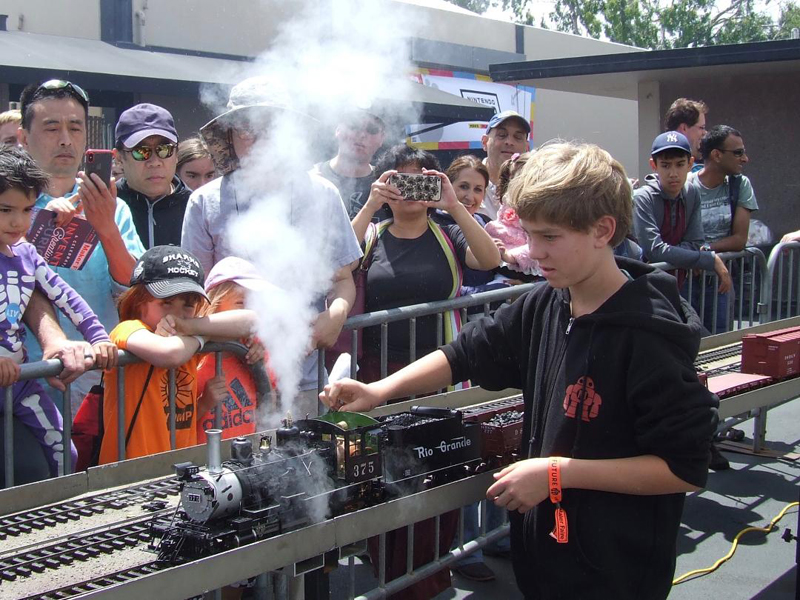









This sure isn’t what I searched for. Why even have a search ?